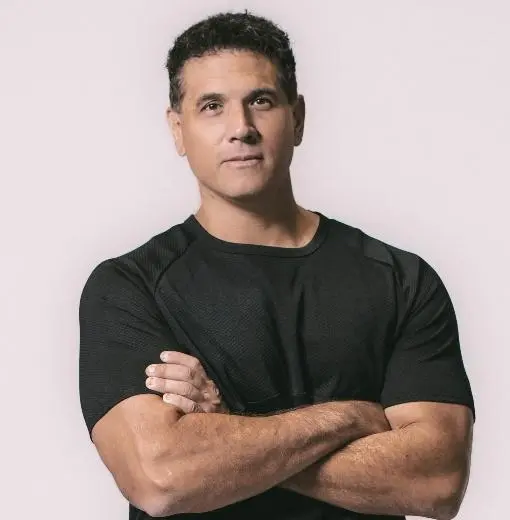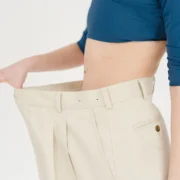Weight Loss Drugs Shift Spending to the ‘Wellness Wallet’

Cutbacks in unhealthy spending among GLP-1 users are shifting $205 per month to the “wellness wallets” of those consumers
The “Wellness Wallet” phenomenon recently sparked by GLP-1 weight loss drugs, like Ozempic, Mounjaro and Wegovy has led to a seismic shift from unhealthy to healthy consumption options for millions of American consumers.
A survey by KFF reports at least 4% of adults are currently using these drugs, while new reports, surveys and data are alluding to a shift from unhealthy food to wellness purchases to the tune of over $205 per month and most likely growing. New estimates by JPMorgan suggest that by 2030, as much as 9% of the U.S. population —that’s over 30 million people—could be taking advantage of these drugs.
As a result, we are going to observe a huge shift of wealth from unhealthy to healthier living and wellness options.
Consumers Demand Healthy Food Options
Data-driven revelations have pointed to a compelling societal pivot towards health and wellness for consumers taking GLP-1 medications. The perspective from Wall Street is that unhealthy food is becoming “the new coal,” and there is an increasing demand that food companies revise their strategies away from sugary and processed foods. For example, 73% of Bloomberg Pulse respondents are calling for unhealthy food companies to come up with a new game plan.
This demand is already being seen with Krispy Cream getting downgraded, Nestle’s stock dropping 5.3%, Morgan Stanley reporting grocery expenditure shopping down 9% with GLP-1 users (90,0000 households and 12.3% reported taking GLP-1s) and Walmart reporting a shift in food sales to health and wellness purchases.
GLP-1 Users Embrace Exercise
The shift is not just restricted to diet, however. As the population loses weight (on average, users lose up to 21% according to clinical studies) thanks to GLP-1 drugs, they show increased interest in beauty products and body-enhancing procedures.
In addition, we see emerging trends in fitness as weight loss drugs have a negative side-effect of causing a loss of body mass, creating a need for users to do strength training. Reports are showing these users are twice as likely to take up exercise.
According to a Morgan Stanley research analyst, 35% of drug users exercised before taking the medication and 71% reported doing exercise while taking the drugs. This is leading to a growing market for performance wear as people begin to slim down and need new apparel. Simultaneously, social fitness is gaining popularity as people reduce time spent eating out and drinking, pursuing healthier activities with friends instead.
Rise of the ‘Wellness Wallet’
In a palpable sense of urgency, large food manufacturers, such as Chipotle Mexican, Dannon, Unilever, Nestlé, and Conagra Brands are following the trend — 66% of GLP-1 drug users are reporting consuming less confectionery (snacks, candy, sugary drinks). These brands are deploying teams of demand and behavior scientists to study the impact and develop new products to cater to this healthier consumer demographic.
This evolution, coupled with the impressive “Wellness Wallet Share” of $205 per month, instigates crucial questions about what else the fitness and wellness industry can do to leverage this trend.

Evidence for such a profound shift in consumption trends comes from a significant change in buying patterns among GLP-1 users, according to anonymous data from 95 million JPMorgan customers. The four notable areas that saw changes are a steep decline in fast food and alcohol sales, a shift in snack/soda preferences, and increased demand for fitness.
The impact of GLP-1 drugs on users’ behaviors can be seen, and reports are suggesting an 85% decline in fast food sales, a 60-70% reduction in alcohol consumption, an 80% reduction in snacking and a 70% reduced spend on soda. These reductions can be seen as savings of $125 per month from fast food, $28 per month from alcohol and $50 per month from snacks and soda.
These saved amounts are being reallocated to healthy lifestyle choices, proving the growing prominence of the “Wellness Wallet”. Fitness and wellness businesses now have an unprecedented opportunity to cater to these changing preferences and capture this increasing wallet share with new products and services catered to this customer group as well as selling more of their existing offerings.
In addition, new surveys have shown weight loss drug users presenting a 19% decrease in patronizing chains like Outback Steakhouse, Chipotle Mexican, and Cheesecake Factory, with a 50% drop in visit frequency.
A Brave New World for Brands
However, it’s not all gloom for the hospitality sector. Sweetgreen, for example, has emerged as a winner in these changing times, thanks in part to the increased propensity for GLP-1 users to choose fruits and vegetables over junk food. Adding to the Wellness Wallet amount is the projected 19% reduced spend on eating out, adding another $57 per month to healthier options which is a shift from unhealthy food spending to healthy food spending.
Overall, the increasing adoption of GLP-1 drugs presents both challenges and opportunities across various sectors. Companies in wellness and fitness, beauty, apparel and food need to realign their strategies and product offerings to cater to evolving customer preferences. They need to research behavior changes, consider how to develop new consumer programs/services, and perhaps, start introducing relevant facilities to maintain a competitive market advantage.
Bloomberg’s recent post estimated this market to soar to $80 billion by 2030 and Goldman Sachs has estimated it to reach $100 billion by 2030.
Judging by the current momentum and considerable savings produced by the shift in consumer behavior—accumulating to the “Wellness Wallet”, this projection seems highly feasible. But what is not being shown or talked about is where the shift in spending is happening; we are just starting to see this paradigm shift which looks to be bigger than the money spent on the drugs themselves.
What we’re witnessing could be just the tip of the iceberg, with more products and services entering this segment as supply constraints by big pharmaceutical companies get solved.
The rise of the “Wellness Wallet” isn’t just a financial phenomenon; it marks a milestone in a societal shift towards health-conscious living and wellbeing, reshaping business models and consumer habits along the way. In the future, companies that capitalize on this phenomenon will likely reap bountiful rewards.

Mike G. Hansen is a serial entrepreneur, venture partner and strategic advisor in the Health, Fitness and Technology industry. He has over 25 years of experience across nearly 20 market segments and investment groups, and has done business with over 100 brands. He is a thought leader in our industry covering top trends and providing key insights as he drives innovation and growth forward with corporations and entrepreneurs. To learn more about these trends and insights, you can reach Mike at [email protected]



